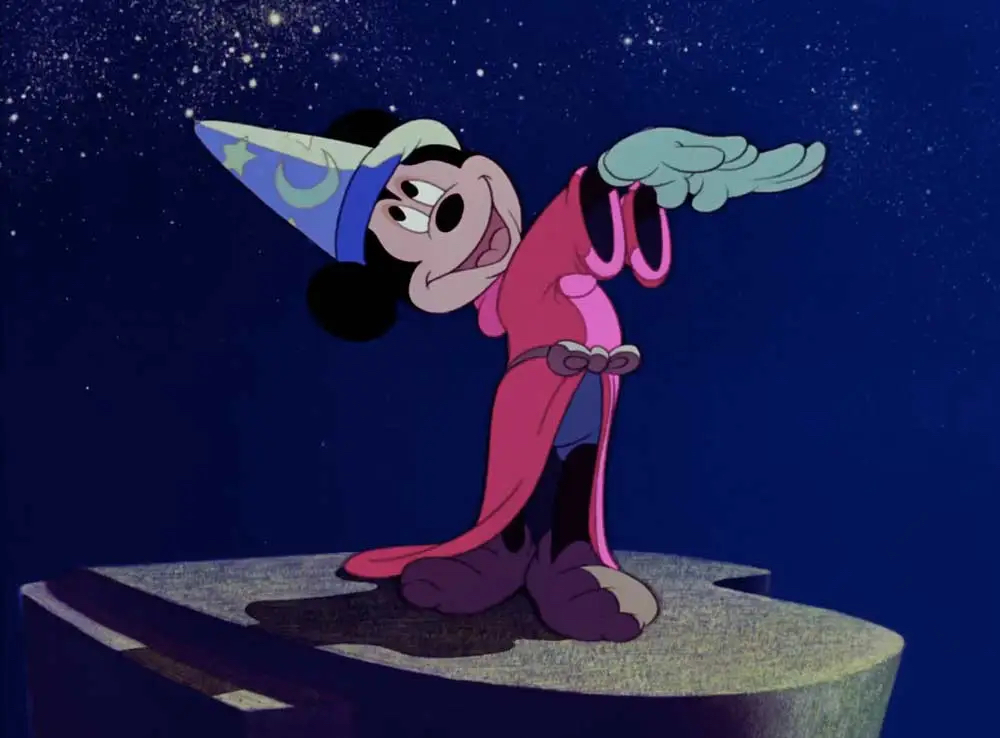Disney Imagineers a Great Headline, But the Coming Months May Be More Complicated (Bloom)
The three Disney-owned streaming services now have ever-so-slightly more subscribers together than Netflix does all by itself. Did someone in Burbank just come up with a perfect distraction?

After a really bumpy first couple of years as Disney head honcho, Bob Chapek finally has had a nice little run, topped by last week’s fascinating announcement that the three Disney-owned streaming services now have ever-so-slightly more subscribers together than Netflix does all by itself.
That the margin of “victory” was somewhere around 0.2% (note that decimal point) was immaterial for the resulting headlines in this and just about every other relevant publication. Mission accomplished there, whoever you are, replacement Corporate Communications guru!
Not to ever suggest that such an extremely, almost suspiciously narrow lead was perhaps custom engineered to distract subscribers, journalists, investors, competitors and others from all the other Disney streaming news that came out last week, or that’s coming soon. Not to put too fine a point on it, by year’s end, getting such great headlines may be slightly more difficult for Disney, Chapek, and the new guru. Let’s review the bigger picture:
> Price hikes are coming in December, big ones that may affect inflation-addled subscribers’ continued engagement. Disney Plus is jumping 37.5%, to $10.99 a month. Both ad-supported and ad-free Hulu will rise 14.3%. The Disney bundle of D+, ad-supported Hulu, and ESPN Plus will jump 42.8%, to $19.99 per month, same as the top-end Netflix tier. The stand-alone ESPN Plus was already getting a hefty bump to $9.99 a month, though most of its new customers were joining through the bundle. "We thought this was the perfect time to bring up that cost-value equation," Chapek told CNBC on Friday. "We suspect we’ll see growth accelerate in next quarter across the board. So we’re very bullish."
> Subscribers turned off by the price hikes can instead opt into the $12.99/month ad-supported bundle that’s also coming in December. At least some subscribers will take that option, which is designed to generate lots of new revenue and keep around subscribers who might otherwise churn out. If you like your streaming TV like your old cable TV package (but with better ad targeting), it’ll be awesome-ish. Maybe.
> As I wrote previously, Disney’s streaming service in India, Disney Plus Hotstar, is almost certain to lose a lot of subs, admittedly ones who don’t pay very much, between now and next spring. Disney “showed discipline” and didn’t re-up streaming rights for Indian Premiere League cricket that have expired. Re-upping would have cost Disney about $3 billion, more than it spent the past five years for all media rights to the massively popular league.
> Those Indian subscribers are just one contributor to the relatively low average revenue per user that Disney generates from streaming, an ARPU that dropped another 5% last quarter. Even on the domestic side, Disney generated just 39% as much revenue per user as Netflix in Q2. And let’s not even get into the valid point made by Netflix that Disney triple-counts its domestic bundles, even though it’s the same household getting all three services in millions of accounts.
NEXT TV NEWSLETTER
The smarter way to stay on top of the streaming and OTT industry. Sign up below.
> Alongside everything else, Disney indirectly suggested its lead in the subscriber wars might be short-lived. It finally acknowledged that it’s unlikely to reach its previous guidance of 230 million to 260 million streaming subscribers by 2024, cutting by 15 million both the top and bottom end. Disney even devised a new way to define its customer base (another win for New CorpComm Guru!) with “core” and “non-core” subscribers. Non-core is those low-ARPU South Asian subs, of whom the company vaguely said it will have “up to” 80 million by 2024. The company acknowledged predicting who sticks around on Disney Plus Hotstar next spring won’t be clear for a while. Perhaps “up to 80 million” is another example of optimistic number engineering.
> Regardless of lower subscriber projections, Disney executives said streaming operations will break even by 2024, last quarter’s $1.1 billion loss notwithstanding. Those losses were $300 million higher than analyst expectations, but executives said they’re expected to decline going forward. Such sudden fealty to fiscal restraint is part of an industry-wide chorus (see also, Netflix’s various announcements, and David Zaslav’s green-eyeshade work on every corner of HBO Max). Achieving global growth, managing the decline of legacy operations, and still keeping costs to break-even two years hence again seems aggressive. Add in Chapek’s statement to CNBC on Friday that he hopes to reinstitute the company’s dividend, after reducing debt, and it seems rather boldly optimistic.
> Speaking of complicated and hazy futures, Disney still must figure out what to do with Hulu. Sticky NBCU programming on Hulu such as Saturday Night Live and The Voice are headed to Peacock in the next few weeks. Under a 2019 deal, Disney will need to buy out NBCU’s one-third stake by 2024, for at least $9 billion. Hulu has been on a great run, thanks to FX-first shows such as Dopesick, Reservation Dogs, and Pam & Tommy, and originals such as Only Murders in the Building.. But what’s its future as Disney Plus starts diversifying with foul-mouthed, adult-focused content such as Deadpool? Also, how does Disney get to break even by 2024 if it also has to cough up, say, $10 billion to $15 billion to Comcast?
So, despite that great headline and Chapek's earlier contract extension, it's still a fraught time even amid Disney's real achievements in streaming. The company's aggressive approach to streaming is the polar opposite of Zaslav's throwback reliance on still-lucrative but fading legacy platforms such as cable TV and theatrical movie releases.
Which approach will lead to the softer landing in the years ahead? Like so much in Disney’s new numbers, there's plenty of uncertainty here beyond that great headline. Investors, subscribers, advertisers, and partners will need to look deeper to see the more challenging numbers underneath. ▪️
David Bloom of Words & Deeds Media is a Santa Monica, Calif.-based writer, podcaster, and consultant focused on the transformative collision of technology, media and entertainment. Bloom is a senior contributor to numerous publications, and producer/host of the Bloom in Tech podcast. He has taught digital media at USC School of Cinematic Arts, and guest lectures regularly at numerous other universities. Bloom formerly worked for Variety, Deadline, Red Herring, and the Los Angeles Daily News, among other publications; was VP of corporate communications at MGM; and was associate dean and chief communications officer at the USC Marshall School of Business. Bloom graduated with honors from the University of Missouri School of Journalism.

